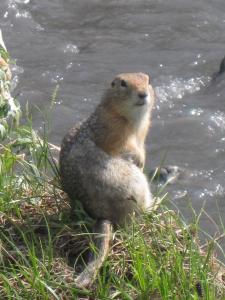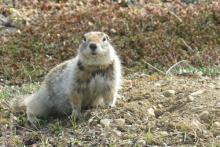What Are They Doing?

The research team has recently found that the arctic ground squirrel displays daily rhythms of body temperature throughout the arctic summer, in the absence of a light-dark cycle. The current study will investigate the circadian rhythms in arctic ground squirrels during the continuous daylight present during the active summer season and continuous dark of the 6-8 months of hibernation spent sequestered in a burrow. The team wants to understand why arctic ground squirrels, unlike other arctic vertebrates, appear to maintain 24-hour rhythms during the active season. They hypothesize that the persistence of circadian rhythmicity allows ground squirrels to reduce energy expenditure by anticipating predictable changes in its immediate surroundings. They are testing their hypothesis by experimentally phase-shifting free-living ground squirrels to be active at 'night' and estimating their subsequent rates of energy expenditure.
Where Are They?

Latest Journals

Cory Williams is currently a research assistant professor at Northern Arizona University. His research examines the physiological and behavioral mechanisms that allow animals to cope with environmental change. Specifically, he is interested in the functional and ecological significance of circadian rhythms in arctic vertebrates and the factors underlying plasticity in the timing of annually recurring life-cycle events. Ultimately, the capacity of polar animals to adjust their timing in response to changing environmental conditions, either through phenotypic plasticity or microevolution, will be an important determinant of their resilience to climate change.





